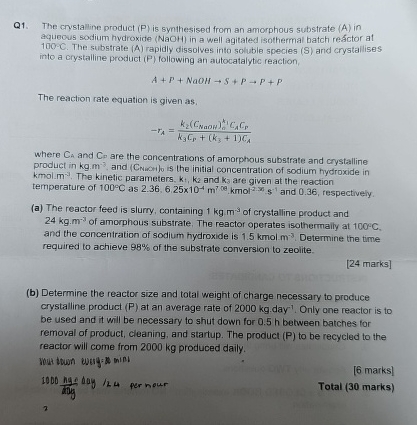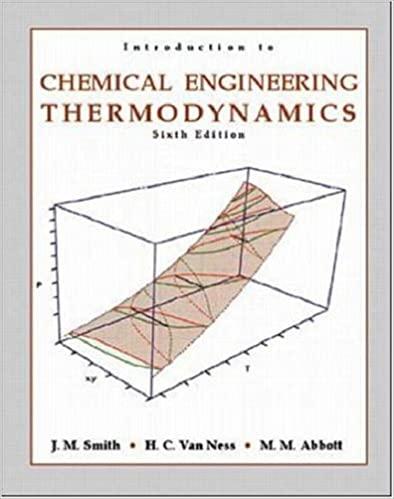Answered step by step
Verified Expert Solution
Question
1 Approved Answer
Q 1 . The coystalline product ( P ) is synthesised from an amorphous substrate ( A ) in aquecus sodium hydroxide ( NaOH )
Q The coystalline product is synthesised from an amorphous substrate in aquecus sodium hydroxide NaOH in a well agitated isothermal batch rector at C The substrate A rapidly dissolves into soluble species S and crystallises into a crystalline product P following an autocatalytic reaction.
NaOH
The reaction rate equation is given as
where and are the concentrations of amorphous substrate and crystalline product in and CNioryo is the initial concentration of sodium hydroxide in kmol. The kinetic parameters, and are given at the reaction temperature of as and respectively.
a The reactor feed is slurry, containing of crystalline product and of amorphous substrate. The reactor operates isothermally at and the concentration of sodium hydroxide is kmol Determine the time required to achieve of the substrate conversion to zeolite.
marks
b Determine the reactor size and total weight of charge necessary to produce be used and it will be necessary to shut down for between batches for removal of product, cleaning, and startup. The product to be recycled to the reactor will come from produced daily.
Wut twon Utig. onid.
day per nour
marks

Step by Step Solution
There are 3 Steps involved in it
Step: 1

Get Instant Access to Expert-Tailored Solutions
See step-by-step solutions with expert insights and AI powered tools for academic success
Step: 2

Step: 3

Ace Your Homework with AI
Get the answers you need in no time with our AI-driven, step-by-step assistance
Get Started


